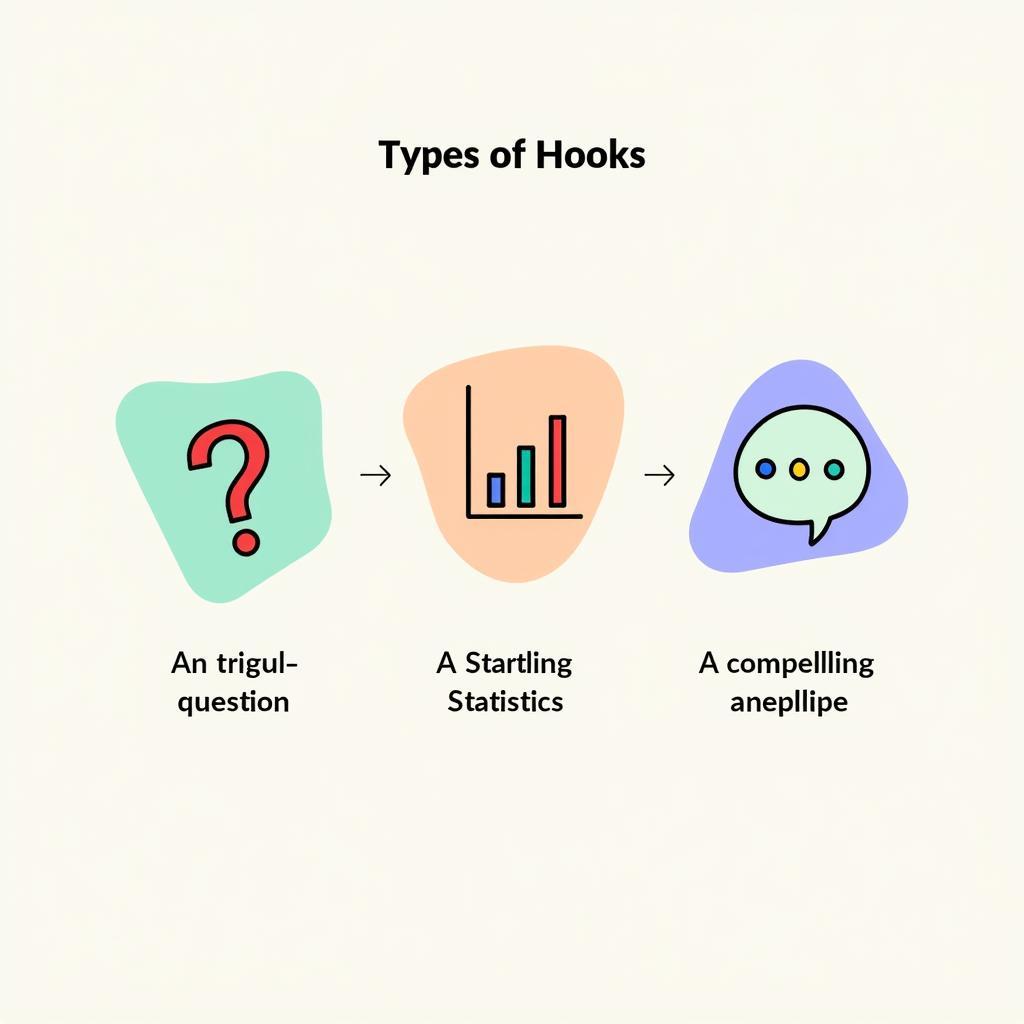The introduction to your research paper is crucial for grabbing your reader’s attention and setting the stage for your argument. The very first sentence, your hook, can make or break your paper’s success. A strong hook draws readers in, piquing their curiosity and making them eager to delve deeper into your research. But how do you craft a hook that is both engaging and relevant to your topic?
Understanding the Power of a Good Hook
Imagine yourself at a bustling academic conference. Amidst a sea of presentations, a speaker walks up and starts their talk with a dry, technical definition. Would you be captivated? Probably not. Now, imagine that same speaker starts with a compelling anecdote, a startling statistic, or a thought-provoking question related to their research. Your interest would be piqued, wouldn’t it?
That’s the power of a good hook. It acts as a bridge, connecting your reader’s existing knowledge and interests to the often complex world of academic research. A well-crafted hook is not just about grabbing attention; it’s about establishing relevance, building credibility, and setting the tone for your entire paper.
Types of Hooks for Research Papers
There are numerous approaches to crafting a compelling hook. The most effective type will depend on your specific topic, target audience, and overall writing style. Here are some popular and effective hook techniques:
1. The Intriguing Question
Posing a thought-provoking question immediately engages your reader’s mind. It compels them to consider the question and sparks a desire to learn more about your research and potential answers.
Example:
- “What if the key to understanding the origins of consciousness lies not in the human brain, but in the quantum realm?”
2. The Startling Statistic
Numbers have a way of grabbing attention, especially if they are unexpected or challenge common assumptions. A shocking statistic can highlight the importance of your research and its potential impact.
Example:
- “Over 70% of the world’s population believes in some form of paranormal activity, yet scientific explanations remain elusive.”
3. The Compelling Anecdote
Humans are storytellers by nature. We connect with narratives and find them inherently engaging. A brief, relevant anecdote can draw your reader in and create an emotional connection to your research.
Example:
- “In 1977, a mysterious signal was received from deep space, lasting only 72 seconds and defying any known explanation. This event, known as the ‘Wow! Signal,’ continues to fuel debate and research into the possibility of extraterrestrial life.”
 Types of Research Paper Hooks
Types of Research Paper Hooks
4. The Bold Statement
Making a strong, perhaps even controversial, statement can be an effective way to pique your reader’s curiosity. However, it’s essential to ensure your statement is relevant to your research and can be supported by evidence later in your paper.
Example:
- “The current scientific paradigm is insufficient to explain the vast array of unexplained phenomena documented throughout history.”
5. The Relevant Quotation
A powerful quote from a respected figure in your field can lend credibility and authority to your writing. Choose a quote that is directly relevant to your research question or thesis statement.
Example:
- “As Carl Sagan famously said, ‘The universe is a pretty big place. If it’s just us, seems like an awful waste of space.'”
Integrating Your Hook into Your Introduction
Your hook is the first sentence of your introduction, but it should flow seamlessly into the rest of the paragraph. Here’s a simple structure for an effective introduction:
- Hook: Capture your reader’s attention.
- Context: Provide background information on your topic, gradually narrowing the focus.
- Thesis Statement: Clearly state the main argument or purpose of your research paper.
By following this structure, you can ensure that your hook effectively introduces your topic and sets the stage for a compelling and informative research paper.
Tips for Writing a Strong Hook
- Know Your Audience: Who are you writing for? Consider their existing knowledge and interests when crafting your hook.
- Keep it Concise: Your hook should be no more than one or two sentences.
- Be Original: Avoid clichés and overused phrases. Strive for a unique and memorable opening.
- Stay Relevant: Ensure your hook directly relates to your research topic and thesis statement.
Need Help with Your Research Paper?
Writing a captivating introduction is just one aspect of crafting a successful research paper. If you’re feeling overwhelmed or need guidance on any aspect of your research, from choosing a topic to formatting your bibliography, our team at Paranormal Research is here to help!
Contact us today for personalized assistance:
- Phone: 0904826292
- Email: research@gmail.com
- Address: No. 31, Alley 142/7, P. Phú Viên, Bồ Đề, Long Biên, Hà Nội, Việt Nam.
Our 24/7 customer support team is ready to answer your questions and provide the resources you need to succeed.
You might also find these resources helpful:
Don’t let writer’s block hold you back. Start crafting a compelling hook today!